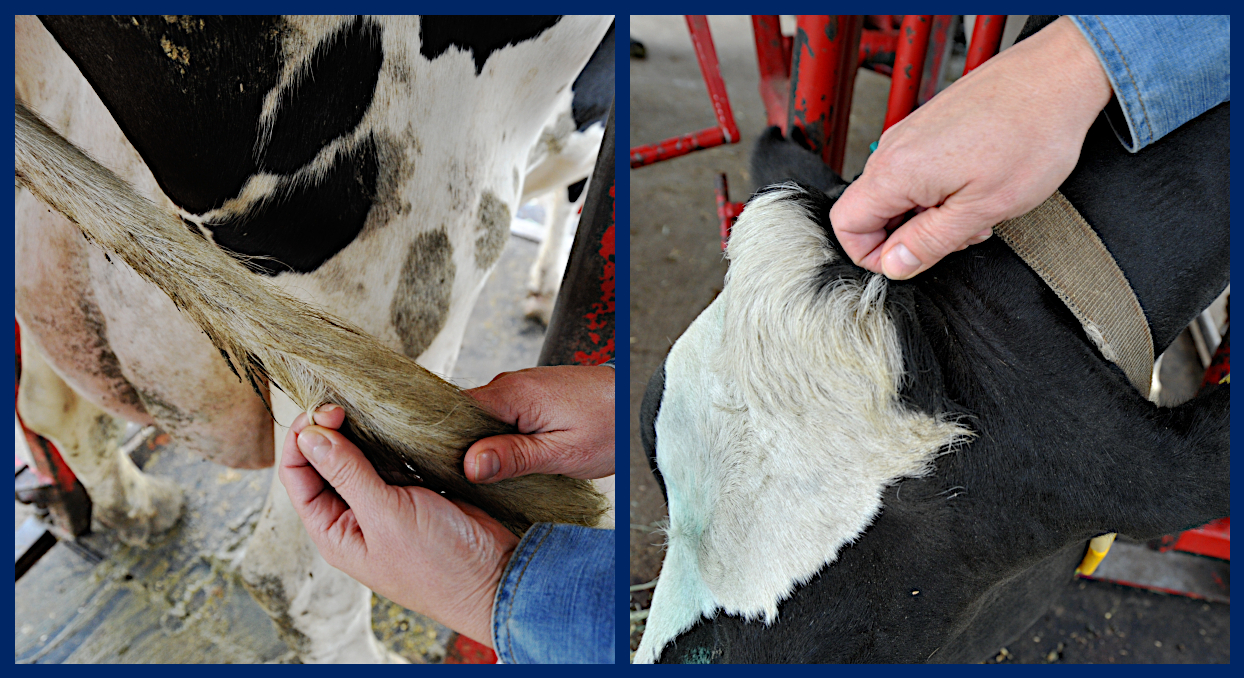Quick Summary
Click here for Price and Turnaround Time
Phenotype: Pulmonary hypoplasia with anasarca (PHA) is a lethal genetic defect characterized by incomplete development of the lungs and severe subcutaneous fluid accumulation, leading to abortion or the birth of a dead calf.
Mode of Inheritance: Autosomal recessive
Alleles: N = Normal/Unaffected, PHAD = Pulmonary hypoplasia with anasarca (Dexter variant)
Breeds appropriate for testing: Dexter, Dexter crosses
Explanation of Results:
- Cattle with N/N genotype will not have pulmonary hypoplasia with anasarca and cannot transmit this PHA variant to their offspring.
- Cattle with N/PHAD genotype will not be affected by pulmonary hypoplasia with anasarca, but are carriers. They will transmit this Dexter PHA variant to 50% of their offspring. Matings between two carriers result in a 25% chance of producing a calf with pulmonary hypoplasia with anasarca.
- Cattle with PHAD/PHAD genotype will have pulmonary hypoplasia with anasarca, a lethal condition. Fetuses with this genotype are expected to naturally abort or be stillborn.
$30 one test per animal
Also available as part of the following packages:
$40 this test + one test from list below
$50 this test + two tests from list below
$60 this test + all tests from list below
- Dun Coloration in Dexters
- MC1R (Extension) - Red/Black
- Dexter BD1 Bulldog Dwarfism (Note: $75 flat fee for Bulldog Dwarfism BD2 test)
Sample Collection
Most of the cattle DNA tests offered by the VGL are carried out using cells from the roots of a hair sample (roughly 20-40 hairs).
Hair samples should be taken from the switch of the tail, the poll, or the neck.

1. Clean (use comb if possible) tail switch, poll, or neck by removing all loose hair and foreign matter.
2. Use fingers or pliers to grasp approximately 8-10 hairs close to the skin and pull. Pull (do NOT cut) hair strands. Examine the end of hair strands for presence of root bulbs. Hair roots are necessary for DNA testing. If the majority of hair strands lack the root bulbs, discard hair and start again.
3. Repeat until you have approximately 20-40 hairs with root follicles attached.
4. Place the 20-40 hairs with root follicles attached in the envelope and seal with the animal’s ID written on the envelope. If hairs are long they can be taped to the submission form. Do not tape the roots.

5. Repeat steps 1-4 for each additional animal being sampled.
Note:
- Hair should be dry.
- If hair has excess dirt and debris, please brush out if possible before pulling hairs for sample.
- Do not cut the hair! The roots contain the DNA for testing.
- When sampling several animals in the same session, make sure that there are no hair strands in your hands to reduce the possibility of sample contamination. Clean hands and/or pliers if possible.
Pulmonary hypoplasia with anasarca (PHA) is a lethal genetic defect that leads to abortion or the birth of a dead calf. Associated dystocia can also lead to death of the cow. PHA is characterized by incomplete development of the lungs and severe subcutaneous fluid accumulation. PHA occurs in several breeds such as Dexter, Maine-Anjou Shorthorn, and related composite cattle.
Research by Dr. Jon Beever at the University of Illinois identified the mutations responsible for PHA in cattle. The affected gene is the same for the different breeds, but the specific mutation associated with PHA in Dexter cattle is different from the Maine-Anjou/Shorthorn mutation. PHA has an autosomal recessive mode of inheritance.
This genetic test is specific for the Dexter PHA mutation (PHAD).
